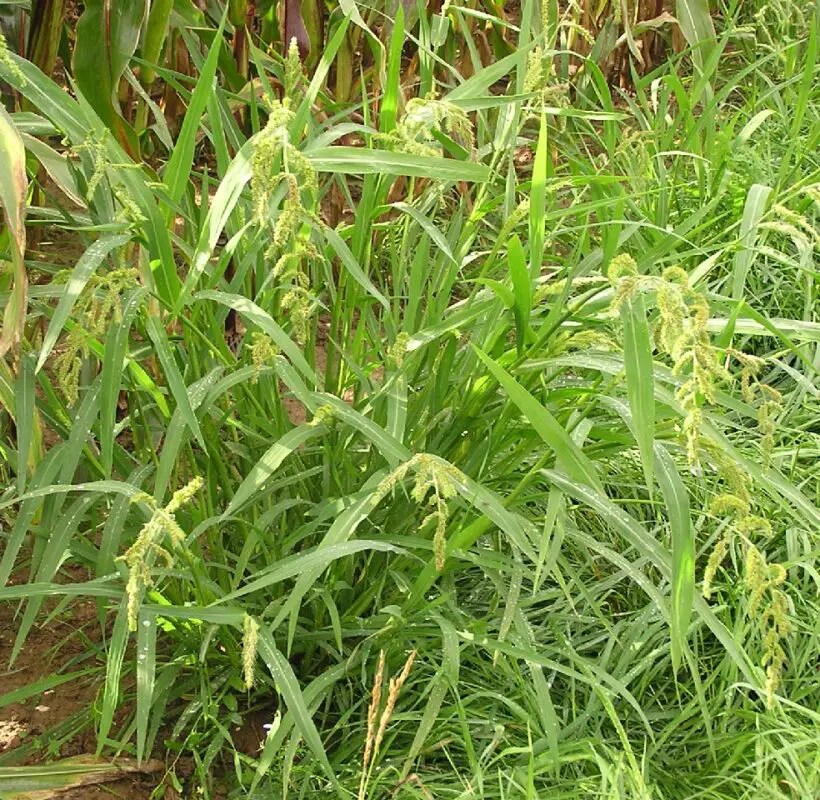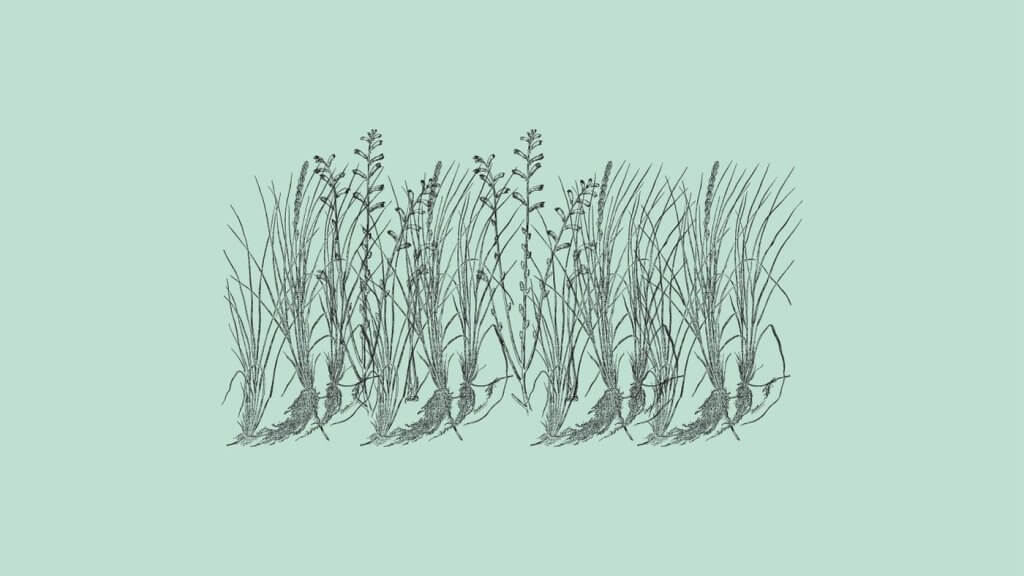Barnyard grass is a nuisance weed that occurs in many nurseries, landscapes, and turf fields. It is an annual grassy weed that germinates in warm soil, winter grains or grain crops and will become highly competitive. Barnyard grass produces edible seeds that can be ground into flour and used to make mush or bread.
Barnyard grass is a characteristically ugly weed that invades your lawn in the summer to deplete it of nitrogen and other nutrients.
Barnyard grass plant profile
| Scientific name | Echinochloa crus-galli |
| Family | Poaceae (grass family) |
| Plant type | Summer annual |
| Kingdom | Plantae |
| Genus | Echinochloa |
| Order | Cyperales |
| Phylum | Magnoliophyta |
Common names include:
- barnyard millet
- cockspur grass
- common barnyard grass
- panic grass
- water grass
Barnyard grass or E. crus galli identification
Typically, this weed is a robust, tufted, annual grass with stems that branch from the base, are flattened, and spread over a wide area. Usually hairless, green leaf blades measure 6-15 mm (1/4-1/2 in.), 5-50 cm (2-20 in.), flat or v-shaped, keeled below, and rough or smooth above.
What Are You Foraging For Right Now?
We're thrilled to hear your ideas. What would you like to submit today? Feel free to share your thoughts and experiences with us.
Barnyard grass does not have a ligule (membrane connecting the leaf to the leaf sheath) or auricles. It has numerous green to purple spikelets located on branches of the flowering stem, and each spikelet consists of one floret and two empty long-awned glumes. The plant produces approximately 7,200 seeds per plant and prefers warm, moist soil.
Barnyard grass is closely related to junglerice and looks similar to it, except that it lacks the purplish bands that distinguish junglerice leaves from other grasses.

Why is barnyard grass a problem?
Often difficult to harvest due to its tough, fibrous nature, this weed interferes with harvesting equipment, especially when harvesting dry beans and potatoes. It can also reduce yields in most crops. Compared with wild oats, this weed is less competitive but again more competitive than green foxtail.
Barnyard grass is capable of rooting at the nodes and has the ability to re-establish itself following light cultivation. If you are using a minimum-tillage program or direct seeding with sweeps, barnyard grass may not be controlled by tillage, and your weed control strategy will need to be adjusted accordingly.
In its mature form, the plant grows higher than rice, competing for sunlight and nutrients from the soil. It is considered to be the principal weed of rice in the world.
Barnyard grass is hated throughout the world for its ability to mature in less than 42 days and produce as many as 40,000 seeds on each plant. It is a serious problem in rice fields, where one plant per square foot reduces production by 25% and corn yields by 20%.
Despite its preference for damp locations, it is not bothered by elevation and is capable of growing to a height of 5,000 feet, so it can haunt your garden or lawn in most places.
What is barnyard grass good for?
A barnyard grass plant propagates by seed, which has the capability of germinating for up to 13 years and is cultivated and used as hay.
Grazing cattle can consume fresh barnyard grass in pastures, whereas the seed of barnyard grass is an important source of food for songbirds and waterfowl and has been utilized for the nutrition of sheep in Australian drought mitigation programs.
Is barnyard grass toxic in any way?
It is important to note that barnyard grass contains nitrates, which can cause nitrate poisoning in horses if they ingest large quantities of it. In spite of the rarity of this type of poisoning, it can cause severe symptoms when it occurs.
Although toxic quantities of nitrates have been measured in barnyard grass, these are usually not a cause for concern.
Can you eat barnyard grass?
Like most grasses, barnyard grass produces edible seeds that can be ground into flour and used to make mush or bread.
Considering the size and abundance of these seeds, it is perhaps not surprising that the plant has at times been cultivated as a grain.
Where can you find barnyard grass?
Native to Europe and India, it is now found in temperate and tropical habitats between latitudes 50 N and 40 S.
It is regarded as a serious weed problem in 42 countries and is found in at least 27 more. Barnyard grass is widely distributed throughout North America, except for Alaska, the Northern tier of Canada, and Newfoundland.
Despite its preference for rich, wet soils and low to medium altitudes, barnyard grass is easy to find as it thrives in a variety of situations, including roadside areas.
How to use barnyard grass in the kitchen
Winnowed seeds of this grass can be used in many ways, including:
- as a staple grain
- parched
- roasted
- boiled
- ground into flour
This flour can be used like Japanese millet to make cereals, macaroni, and dumplings.
The young shoots are consumed as a vegetable, either raw or cooked. The seeds can be popped like popcorn. The seeds are roasted and used as a caffeine-free substitute for coffee.
In the Philippines, roots are boiled like tea to soothe indigestion.
Ana has always been interested in all things nature and flora. With her expertise in home gardening and interest in foraging, she has been spending her weekends and free time looking for edible native plants, flowers, and fungi. One of her many hobbies includes testing new savory and sweet recipes, juices or teas made from freshly picked plants, wild fruits, or mushrooms.

